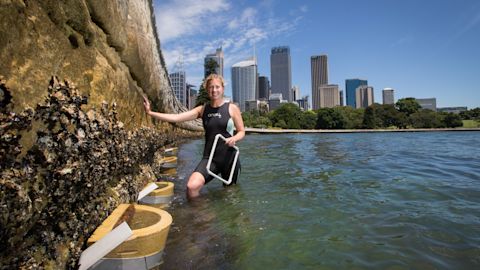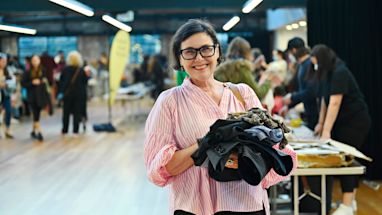We're rolling out the welcome mat for sea creatures along our picturesque harbour foreshore. Artificial rock pools are creating new habitats for marine life.
Under the City-managed project, 60 new concrete flowerpots will be attached to seawalls in Sydney Harbour to attract vulnerable marine life back into our popular waterways.
It follows the success of a recent trial project where 28 new and unique marine species were recorded in Blackwattle Bay. Underwater cameras were purchased with an $11,000 City grant.
The species included star fish, crabs, sea snails, algae and fish varieties, such as yellowfin bream.
The project provided new insights supporting the fusion of engineering and ecological knowledge to sustain biodiversity in cities.
By adding habitat features and components of biodiversity largely absent along the foreshore, we'll enhance the resilience of a diverse harbour.
Sydney University marine ecologist Rebecca Morris will continue her work from the original trial. She'll monitor the new pots installed on seawalls along Glebe foreshore, Farm Cove and Elizabeth Bay, connecting one of few remaining natural coastal foreshores at Mrs Macquarie’s Chair.

“I’ve been amazed at how quickly we are getting a variety of marine organisms colonising the flowerpots. By adding just one different type of habitat to the seawall on this small scale, we have seen a significant improvement to the marine biodiversity.
“It’s hoped that eco-engineering projects like the flowerpots will help rehabilitate biodiversity in areas where natural shores have been replaced because of foreshore development,” Rebecca says.
The City has invested $20 million over the past 10 years to transform the once overgrown Glebe foreshore into a beautiful public space and native habitat. New seawalls, niches, rocky embankments, saltmarsh and mangroves are helping local marine life thrive.
The project is in partnership with the University of Sydney and the Royal Botanic Garden and Domains Trust. It is supported by the Sydney Coastal Councils Group with a $104,000 grant from the federal government.
Published 11 April 2016, updated 19 October 2023



